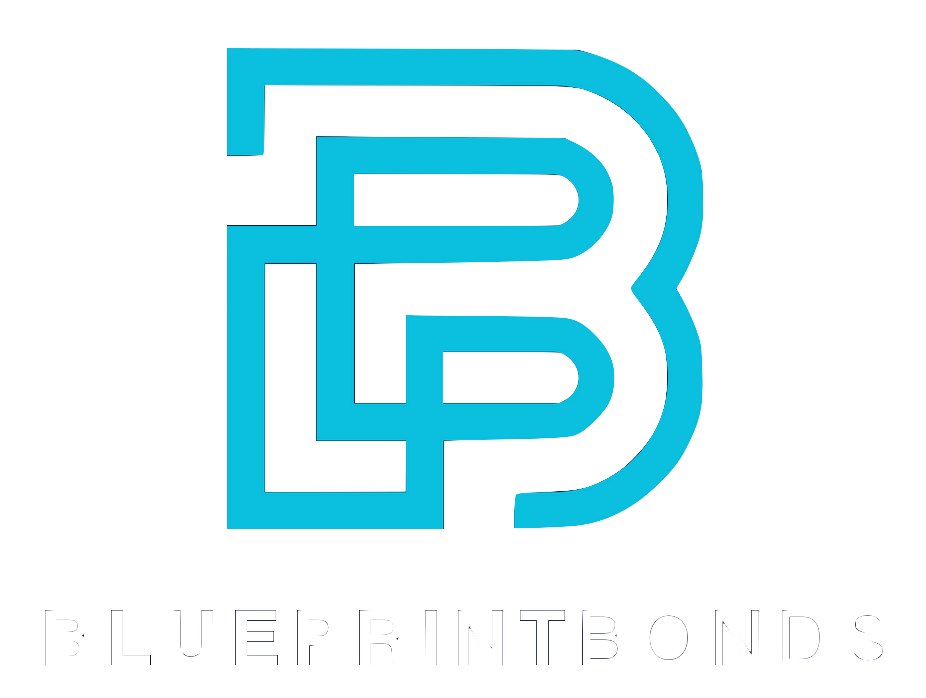In the dynamic world of construction, understanding the nuances of bond claims can be the difference between project success and costly setbacks. With construction spending on the rise and the surety market experiencing significant growth, contractors face a complex landscape where risks must be managed proactively. According to AM Best, underwriting income in the U.S. surety market reached $2.2 billion in 2023, driven largely by increased public infrastructure projects. This growth underscores the importance of grasping the lessons bond claims offer to avoid becoming part of those statistics.
Bond claims often stem from issues that contractors can anticipate and mitigate with the right knowledge and preparation. This article explores critical lessons from bond claims, focusing on risk management, quality control, safety, and adaptability—key areas that contractors must master to stay ahead in 2025 and beyond.
Understanding the Root Causes of Bond Claims
Bond claims typically arise when contractors fail to fulfill contractual obligations, leading to financial losses for project owners or subcontractors. One of the primary drivers behind these claims is quality assurance and quality control (QA/QC) failures. In fact, recent data from Holmes Murphy reveals that in Q2 2025, QA/QC issues were the leading cause of reported claims among design firms.
These failures can manifest as design errors, construction defects, or incomplete work, all of which jeopardize project timelines and budgets. For contractors, this highlights the necessity of implementing rigorous QA/QC protocols throughout every phase of construction. Early detection and correction of potential issues not only reduce the risk of claims but also enhance client satisfaction and reputation.
Moreover, the tightening of underwriting standards by surety companies, as noted by Robert Valenta, Senior Financial Analyst at AM Best, reflects the industry's response to rising losses: "Rising losses have led carriers to tighten underwriting standards for certain bond classes." This means contractors must demonstrate stronger risk management practices to secure bonds and maintain favorable terms.
In addition to QA/QC failures, another significant factor contributing to bond claims is the lack of effective communication among project stakeholders. Misunderstandings between contractors, subcontractors, and project owners can lead to misaligned expectations and ultimately result in disputes. For instance, if a contractor is not fully aware of the specific requirements outlined in the contract, they may inadvertently deliver subpar work, triggering a bond claim. Establishing clear lines of communication and regular updates can mitigate these risks, ensuring that all parties are on the same page and reducing the likelihood of claims arising from miscommunication.
Furthermore, the financial stability of a contractor plays a crucial role in bond claims. Contractors facing financial difficulties may cut corners or rush through projects to save costs, which can lead to quality issues and incomplete work. Surety companies often assess a contractor's financial health as part of the bonding process, and a contractor's inability to demonstrate sound financial practices can raise red flags. This underscores the importance of maintaining strong financial management and transparency, which not only aids in securing bonds but also fosters trust with clients and stakeholders throughout the project lifecycle.
Mitigating Risks Through Safety and Injury Prevention
Safety remains a cornerstone in managing bond claim risks. The construction industry continues to grapple with high injury costs, with CoinLaw reporting that in 2025, 68.2% of the industry's total injury costs were attributed to nonfatal injuries. These injuries not only impact workforce productivity but can also lead to delays, increased insurance premiums, and potential claims against contractors.
Adopting advanced safety measures and technologies is essential. A nationwide survey of 600 AEC industry practitioners highlighted that safety and reliability are significant factors driving the adoption of AI-powered collaborative robots in construction. These robots assist in hazardous tasks, reducing human exposure to risk and enhancing overall site safety. By integrating such innovations, contractors can lower injury rates, thereby minimizing the likelihood of claims related to worksite accidents.
Additionally, contractors should prioritize comprehensive safety training and maintain strict compliance with OSHA regulations. Proactive safety management not only protects workers but also strengthens a contractor’s position when negotiating bonds and handling claims. Regular safety drills and workshops can foster a culture of safety, ensuring that all employees are well-prepared to handle emergencies and understand the importance of adhering to safety protocols.
Moreover, the implementation of real-time monitoring systems can significantly enhance safety measures on construction sites. Wearable technology, such as smart helmets and vests equipped with sensors, can track workers' movements and detect hazardous conditions, alerting them before accidents occur. This not only serves to protect the workforce but also provides valuable data that can be analyzed to improve safety practices continuously. As the industry evolves, embracing such technologies will be crucial for contractors aiming to mitigate risks and enhance their overall operational efficiency.
Financial Implications: Managing Claims and Indemnity Costs
Bond claims carry substantial financial consequences. The average indemnity claim in construction reached $51,500 in 2025, a rise attributed to medical inflation and longer recovery periods, according to CoinLaw. These escalating costs emphasize the importance of robust risk mitigation strategies to prevent claims from occurring in the first place. The financial burden of such claims can not only impact the immediate cash flow of a construction project but can also have long-lasting effects on a contractor's reputation and future bidding opportunities. As a result, it is essential for contractors to invest in comprehensive insurance policies and to engage in proactive risk assessments that identify potential hazards before they escalate into costly claims.
Contractors must also be aware of the broader economic environment. Anirban Basu, CBIZ Chief Construction Economist, advises that "agility is everything" in today’s market. Planning, foresight, and adaptability are critical to navigating fluctuating economic conditions that can influence project costs and timelines. Contractors who can anticipate changes and adjust accordingly are better positioned to avoid disputes that lead to bond claims. In addition to being adaptable, contractors should also consider diversifying their project portfolios to mitigate risks associated with specific sectors. By spreading their exposure across various types of projects, they can buffer against downturns in any single market segment, thus enhancing their overall financial stability.
Effective financial management includes maintaining accurate project documentation, clear communication with stakeholders, and timely resolution of issues. These practices help reduce misunderstandings and contractual breaches that often trigger bond claims. Furthermore, implementing technology solutions such as project management software can streamline documentation processes and improve transparency. By utilizing these tools, contractors can ensure that all parties involved have access to the same information, which can significantly reduce the likelihood of disputes. Regular training sessions for staff on compliance and risk management can also bolster a company’s ability to handle claims efficiently, ensuring that everyone is equipped with the knowledge to recognize potential issues before they escalate into financial liabilities.
Best Practices for Contractors to Avoid Bond Claims
Learning from past bond claims, contractors can adopt several best practices to safeguard their projects and reputations:
1. Strengthen Quality Control Processes
Implementing stringent QA/QC measures throughout the project lifecycle is essential. Regular inspections, peer reviews, and third-party audits can identify potential defects early, preventing costly rework and claims. Additionally, utilizing modern technology such as Building Information Modeling (BIM) can enhance quality control by allowing for real-time monitoring and visualization of project components, ensuring that any discrepancies are addressed promptly. This proactive approach not only mitigates risks but also promotes a culture of excellence within the team, ultimately leading to higher client satisfaction.
2. Enhance Safety Programs
Investing in safety training, adopting innovative technologies like AI-powered robots, and fostering a culture of safety can significantly reduce injury-related claims. Ensuring compliance with industry standards also builds trust with surety providers. Moreover, engaging workers in safety discussions and encouraging feedback can create a more inclusive environment where everyone feels responsible for safety. Implementing regular safety drills and utilizing virtual reality simulations for training can further enhance preparedness, ensuring that all team members are equipped to handle emergencies effectively.
3. Maintain Clear and Consistent Communication
Transparent communication with clients, subcontractors, and surety companies helps manage expectations and resolve issues before they escalate into claims. Documenting all communications is equally important for legal protection. Establishing a centralized communication platform can streamline interactions and keep all stakeholders informed about project developments. Regular status updates and meetings can also foster collaboration and trust, making it easier to address concerns as they arise and ensuring that everyone is aligned with the project goals.
4. Monitor Economic and Market Trends
Staying informed about industry trends, such as rising construction spending and underwriting adjustments, enables contractors to anticipate challenges and adapt strategies accordingly. Resources like AM Best reports provide valuable market insights. Additionally, networking with industry peers and participating in professional organizations can offer firsthand knowledge of emerging trends and best practices. By being proactive in understanding the economic landscape, contractors can make informed decisions that enhance their competitive edge and reduce the likelihood of bond claims.
5. Foster Agility and Flexibility
As emphasized by industry economists, the ability to pivot quickly in response to economic shifts can prevent project delays and disputes. Agile project management methodologies can support this adaptability. Incorporating feedback loops and iterative processes allows teams to make adjustments on the fly, ensuring that projects remain on track despite unforeseen challenges. Furthermore, cultivating a mindset of continuous improvement encourages teams to learn from past experiences and apply those lessons to future projects, enhancing overall resilience and reducing the risk of bond claims.
Conclusion: Proactive Learning to Prevent Future Claims
Bond claims present significant challenges but also valuable learning opportunities for contractors. By understanding the common causes—such as QA/QC failures and safety lapses—and recognizing the financial impacts, contractors can take proactive steps to mitigate risks. Embracing technology, enhancing safety, maintaining clear communication, and staying agile in a changing economic landscape are key strategies to minimize exposure to bond claims.
As the construction industry continues to evolve, contractors who prioritize these lessons will not only protect their projects but also position themselves for long-term success. Staying informed through reliable sources and expert insights ensures that contractors are prepared before bond claims happen, turning potential pitfalls into opportunities for growth and resilience.




